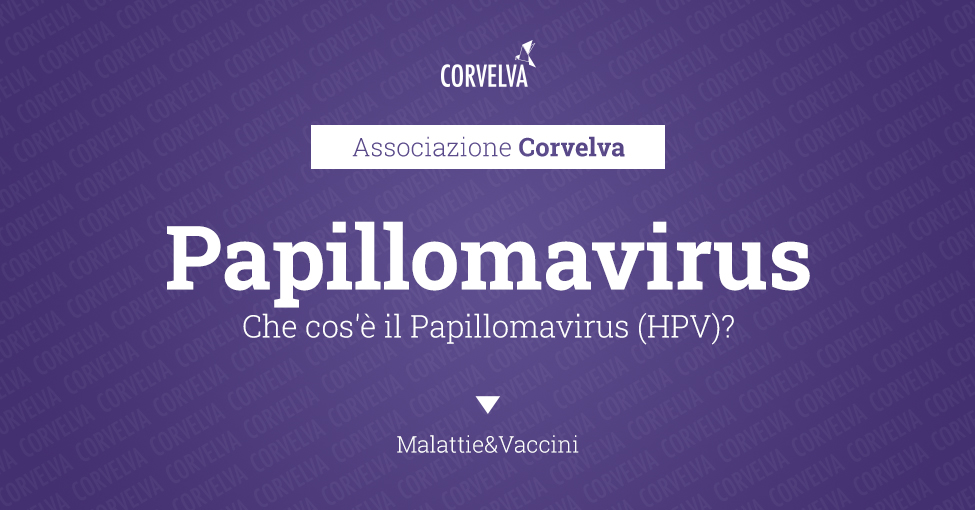What is Papillomavirus (HPV)?

IMPORTANT NOTE: Corvelva invites you to get in-depth information by reading all the sections and links, as well as the manufacturer's product leaflets and technical data sheets, and to speak with one or more trusted professionals before deciding to vaccinate yourself or your child. This information is for informational purposes only and is not intended as medical advice.
Human papillomaviruses are double-stranded DNA viruses found in squamous epithelial cells on the surface of the skin and also in the mucous membranes of the body.(1) There are more than 200 known types of human papillomavirus (HPV), and most are harmless.(2) In most cases, the human immune system clears HPV infections without symptoms or complications.(3)
Over 90% of infected people naturally clear the infection from their bodies within two years.(4) Antibodies from the type of HPV that caused the infection remain in the body to help prevent future infections, but the protection may not last.(5)
Low-risk HPV types - About 75% of HPVs have been associated with noncancerous warts (papillomas) on the hands, chest, arms, and feet, such as low-risk (wart-causing) HPV types 6 and 11.(6) The low-risk HPV types associated with genital warts differ from the high-risk HPV types that may be associated with cancer development after years of chronic infection.(7)
High-risk HPV types - Approximately 40 types of HPV have been found in the mucous membranes of the body, such as the mucous surfaces of the cervix, vagina, vulva, anus, penis, mouth and throat, including the most common HPV types such as high risk 16 and 18. High-risk HPV types are associated with cervical cancer and five other types of genital and oral cancers that affect women and men if the HPV infection does not heal and becomes an infection chronic.(8) High-risk HPV types currently include types 16, 18, 31, 33, 35, 39, 45, 51, 52, 56, 58, 59, 68, 69, 73, and 82.(9)
The National Cancer Institute states that "virtually all cervical cancers are caused by HPV infections, and just two types of HPV, HPV 16 and 18, are responsible for about 70 percent of all cases."(10) HPV type 16 causes 95% of all anal cancers, 50% of all vulvar cancers, 65% of all vaginal cancers, 35% of all penile cancers, and more than half of oropharyngeal cancers in the United States.(11)
References (click to open)
- 1 CDC. Human papilloma virus. Epidemiology and Prevention of Vaccine-Preventable Diseases (The Pink Book). 13th ed. 2015.
- 2 CDC. Surveillance Manual – Chapter 5: Human Papillomavirus (HPV) - Background. 6th Edition, 2013.
- 3 Ault KA, Epidemiology and Natural History of Human Papillomavirus Infections in the Female Genital Tract. Infect Dis Obstet Gynecol. 2006;2006(Suppl.):40470.
- 4 Cubie HA, Diseases associated with Human Papillomavirus infection. virology. 2013 Oct;445(1-2):21-34.
- 5 Trottier H, Ferreira S. et al HPV infection and re-infection in adult women: the role of sexual activity and natural immunity. Cancer Res. 2010 Nov 1; 70(21): 8569–8577 .
- 6 American Cancer Society. HPV Vaccines – What is HPV? Jun. 5, 2018
- 7 National Institutes of Health (NIH). HPV and Cancer. National Cancer Institute. Feb. 19, 2015.
- 8 CDC. Human papilloma virus. Epidemiology and Prevention of Vaccine-Preventable Diseases (The Pink Book). 13th ed. 2015.
- 9 Schmitt M, Dondog B. et al. Abundance of Multiple High-Risk Human Papillomavirus (HPV) Infections Found in Cervical Cells Analyzed by Use of an Ultrasensitive HPV Genotyping Assay. J. Clin. Microbiol. Jan. 2010 vol. 48 no. 1 143-149
- 10 National Institutes of Health (NIH). HPV and Cancer. National Cancer Institute. Feb. 19, 2015.
- 11 Ibid
This article is summarized and translated by National Vaccine Information Center.

